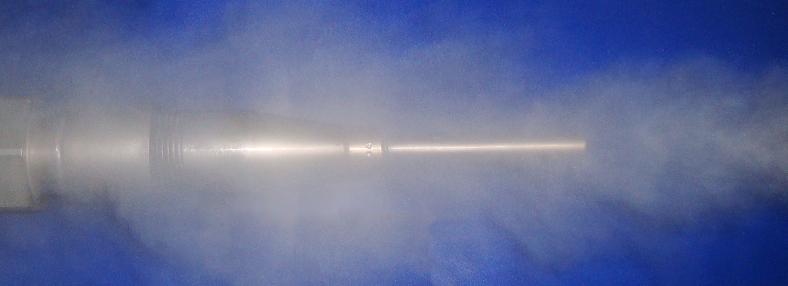Air Speed Indicator for Storms
The air speed indicators commonly used on airplanes are Pitot tubes that convert a pressure measurement into speed. When a plane flies through a cloud, the air contains water droplets or ice particles which can affect the accuracy of the air speed measurement by the Pitot tube. Accordingly, standard Pitot tubes are heated to prevent ice formation and contain ports to drain water. Under normal cloud conditions, such a design works well. Yet under severe storm conditions, where both the size and number of the particles increase, such Pitot tubes have two major shortcomings. First, the error in the air speed measurement can be significant yet not apparent. Second, if particles accumulate and freeze in the Pitot tube, the air speed measurement is completely degraded and difficult to interpret. In the recent Air France 447 disaster, both of these shortcomings may have contributed to the plane's eventual crash.
We have developed an air speed indicator (see below) that overcomes the above problems. It measures the concentration of water/ice particles in the air stream and corrects for its effect on the air speed. In addition, if the water/ice particle concentration were to exceed a critical limit, anti-icing measures would be activated.

